Results 9,881 to 9,890 of 12096
Thread: Anandtech News
-
09-18-19, 01:42 PM #9881
Anandtech: HP Launches Their S430c 43.4-Inch Ultrawide Curved Display
Along with their new Elite Dragonfly notebook, today HP is also rolling out its first ultra-wide curved display, which is being aimed at replacing dual-display setups used by business customers. The S430c Curved Ultrawide Monitor boasts a sizable 43.4-inch diagonal size, which is laid out in a 32:10 aspect ratio with an ultra-wide 4K resolution. Meanwhile, with its roots firmly in the business side of HP's lineup, the company is also outfitting the monitor with a bevy of business-focused features, such as docking capabilities and a pop-up webcam with IR sensors.
Internally, the HP S430c curved ultrawide monitor uses a 43.4-inch VA panel, which offers a 3840×1200 resolution framed in an 1800R curve. The monitor offers a max brightness of 350 nits, a 3000:1 contrast ratio, a 5 ms GtG response time, 178º/178º vertical/horizontal viewing angles, a 60 Hz refresh rate, and to top things off, the screen has an antiglare coating. Seeing as this isn't a video-focused monitor, HP is sticking just covering the sRGB color gamut (99%), which is the primary color space used by office and productivity applications.
Moving on, for connectivity the display has a DisplayPort 1.2 input, a HDMI 2.0 port, and two USB Type-C (DP alt-mode) inputs, allowing the monitor to be connected to virtually any PC. Both USB-C ports can deliver up to 85 W of power to their host laptops (with a total limit of 100W), meaning the monitor can charge even higher-performance 15.6-inch machines. Those USB-C ports also feed the monitor's built-in USB hub, giving the monitor four downstream USB Type-A ports.
Meanwhile for extra features, the S430c includes a pop-up Full HD webcam with IR sensors for Windows Hello, as well as two microphones. The display also supports HP’s Device Bridge technology, which allows the user to control two PCs at the same time on a split screen without a dedicated KVM.
Like other monitors for professionals, the HP S430c comes with a stand that can adjust height and tilt. Meanwhile, HP will also offer a VESA mount adapter for those who need it.
Sales of the HP S430c Curved Ultrawide Monitor will start on November 9. The monitor will retail for $999.
Related Reading:The S430c Curved Ultrawide Monitor General Specifications Panel 43" VA Native Resolution 3840 × 1200 Maximum Refresh Rate 60 Hz Response Time 5 ms Brightness 350 cd/m² Contrast 3000:1 Backlighting LED Viewing Angles 178°/178° horizontal/vertical Curvature 1800R Aspect Ratio 32:10 Color Gamut sRGB: 99% Dynamic Refresh Rate Tech - Pixel Pitch 0.274 mm² Pixel Density 92.7 PPI Inputs 1 × DisplayPort 1.2
1 × HDMI 2.0
2 × USB 3.1 Type-C (w/ 85 W PD)Audio speakers (?)
3.5-mm audio jackWebcam Full-HD IR webcam with microphones USB Hub 4 × USB 3.0 Type-A connectors Stand Height adjustment
Tilt: -5~20 degreePower Standby: 0.5 W
Typical: 80 W
Maximum: 220 WMSRP US: $999
- Lenovo at CES 2019: 43.4-Inch Curved Monitors for Gaming and Work
- Philips Brilliance 499P9H Ultra-Wide 49-Inch Monitor Now Available
- Samsung Announces CRG9: A 49-Inch Curved 5K 120 Hz FreeSync 2 Monitor
- Philips Preps 499P9H Curved 49-Inch 5K Display with USB-C Docking & Webcam
- LG to Demo UltraWide 38-Inch 144Hz Gaming & 49-Inch Workstation Displays at CES
- Dell U4919DW Curved Display Unveiled: 49 Inches, 5120x1440
- HP 2018 Envy 34-Inch Curved All-in-One Gets Cozier
Source: HP
More...
-
09-18-19, 03:41 PM #9882
Anandtech: Logitech Unveils G604 Lightspeed Wireless Gaming Mouse: 15 Programmable Co
Ever the purveyor of peripherals, Logitech is once again expanding its G series of mice with a new high-end wireless mouse for gamers. The Logitech G604 Lightspeed features the company’s latest high-precision sensor as well as 15 fully programmable controls that makes the mouse particularly useful for enthusiasts who play games that benefit from macros.
The Logitech G604 Lightspeed is based on the company’s Hero sensor, which a tracking resolution up to 16,000 DPI. That sensor is being paired with a 32-bit Arm Cortex-M-powered SoC, and on the communications side of matters the wireless mouse supports both Bluetooth and Logitech's proprietary Lightspeed wireless technology. The latter is designed to offer more performance and lower latency than standard Bluetooth, with Logitech offering much greater polling rates – up to 1000 Hz – when using Lightspeed.
In fact this same platform is used for other mice from Logitech, and as a result, the G604 supports the usual Logitech G-series features, such as automatic surface tuning. And that extends to battery life as well; Logitech is promissing a very long battery life for the mouse, rating it to run for up to 240 hours on a single AA battery.
From ergonomics point of view, the G604 Lightspeed is a successor of Logitech’s G602 launched several years ago. The new mouse features a similar shape, however Logitech says that they have refined the design to make it more comfortable and provider a better grip. Logitech’s G604 Lightspeed has 15 controls (including six thumb buttons for high demand actions) each of which can be reprogrammed.
Logitech will start sales of the G604 Lightspeed this fall at a price of $99.99.
Related Reading:
- Logitech Launches G502 Lightspeed Mouse: The Classic Mouse Goes Wireless
- Logitech Re-Launches ‘Legendary’ MX518 Mouse with 16,000 DPI Sensor
- Logitech Launches G Pro Wireless Gaming Mouse with 16,000 DPI Sensor
- Logitech Unveils G305 Mouse with Lightspeed Wireless, ‘Hero’ 12,000 DPI Sensor
- Logitech Boosts Precision of G203 Prodigy Mouse to 8000 DPI via Firmware Update
- Logitech Launches G603 ‘Lightspeed’: 12,000 DPI Hero Sensor, 1 ms Polling, 500 Hrs Battery
Source: Logitech
More...
-
09-19-19, 11:38 AM #9883
Anandtech: Sony’s Micro LED-Based Ultra-HD TVs Available to Consumers: 2K to 16K Reso
Sony this month started to offer its Micro LED-based displays to well-funded consumers. Officially branded as Crystal LED direct view display systems (aka CLEDIS), these ultra high-end products were previously only available for commercial installations. Designed to offer superior contrasts, brightness levels, and viewing angles, Sony’s Crystal LED TVs are designed to replace projector-enabled home theaters and will be available in 2K, 4K, 8K, and 16K versions with sizes of up to 790 inches.
Sony’s Crystal LED display systems rely on bezel-less Micro LED modules that are built using 0.003-mm² individually-controlled LEDs. The modules offer up to 1000 nits peak brightness, around 1,000,000:1 contrast ratio, up to a 120 Hz refresh rate, as well as nearly 180° viewing angles. According to Sony, such a display can cover 140% of the sRGB color space or around 100% of the DCI-P3 color gamut.
Since the micro LED modules are rather large – even though they're the fraction of the size of a normal LED, the large number of micro LEDs adds up – the size of a Full-HD Crystal LED display system is around 110 inches in diagonal. Meanwhile the 4K unit doubles that, to 220 inches. Since we are dealing with devices that are designed to replace projection-powered home theaters, such sizes are well justified, but they are naturally too large for an average home.
Sony’s Crystal LED-based display systems for residential installation will be available through a select group of individually trained and certified Sony dealers. The devices will be supported by Sony’s technicians, who will be able to remotely monitor displays after their installations to provide ongoing service.Sony's Consumer Crystal LED Display Systems Full HD 4K 8K 16K Number of CLED Modules 18 72 288 576 Diagonal 110-inches 220-inches 440-inches 790-inches Dimensions (W×H) 8 ft × 4 ft
2.43 m × 1.22 m16 ft × 9 ft
4.87 × 2.7432 ft × 18 ft
9.75 × 5.4863 ft × 18 ft
19.2 × 5.48Approximate Price of CLEDs at $10,000 per unit $180,000 $720,000 $2,880,000 $5,760,000
Sony is not publicly quoting prices for its consumer Crystal LED products, but there are estimates that each module costs around $10,000 per unit. This would mean that a Full-HD version, which consists of 18 modules, costs over $180,000, whereas a 4K system will be priced at over $720,000.
Related Reading:
- Sony Develops 16K Display: A 783-Inch ‘Crystal LED’ Screen
- Samsung at CES 2019: 219-Inch and 75-Inch Micro LED Ultra-HD TVs Demonstrated
- TCL Shows Off 132-Inch Micro LED 4K UHDTV: 24,000,000 Micro LEDs
Sources: Sony, TechHive
More...
-
09-19-19, 11:38 AM #9884
Anandtech: Huawei Launches Mate 30 & Mate 30 Pro 4G and 5G Variants: First Step Away
Today at Huawei’s global launch event in Munich, the company has detailed its new Mate 30 and Mate 30 Pro flagship devices. The two new phones continue Huawei’s focus on innovating in the photo capture departments, with the new Mate 30 Pro introducing innovative camera features and hardware. Naturally, as is tradition with the Mate series, it represents Huawei’s pioneer series in which it introduces the newest technologies, such as the new brand-new Kirin 990 as well as Kirin 990 5G. The new Mate 30 also introduce new designs and hardware builds – increasing battery life and minimising weight of the phones.
The Mate 30 Pro in particular introduces a new true edge-to-edge display that curves to the sides up to 90° - representing a brand-new form-factor and new ergonomics as Huawei makes away with physical buttons. Beyond all the hardware, the biggest news about Huawei’s newest devices is the fact that they will not come out of the box with Google Play or Google services preinstalled, representing a tectonic shift in the industry that’s bound to have reverberations for the next several years.
Starting off with the heart of the phone, we’re seeing both the Mate 30 and Mate 30 Pro powered by the new Kirin 990 chipsets. As we’ve covered the silicon in more detail a few weeks ago at its launch, this year we’re actually talking about two distinct new chips: The regular Kirin 990, and the Kirin 990 5G. As the name reveals the difference, the 5G variant of the chip includes a new integrated modem with support of Sub-6GHz 5G NR connectivity.Huawei Mate 30 Series Mate 30 Mate 30 Pro
(Mate 30 Pro 5G)SoC HiSilicon Kirin 990
2x Cortex-A76 @ 2.86 GHz
2x Cortex-A76 @ 2.09 GHz
4x Cortex-A55 @ 1.86 GHz(HiSilicon Kirin 990 5G)
2x Cortex-A76 @ 2.86 GHz
2x Cortex-A76 @ 2.36 GHz
4x Cortex-A55 @ 1.95 GHzGPU Mali G76MP16 @ 600MHz
(Mali G76MP16 @ 700MHz)DRAM 8GB LPDDR4X 8GB LPDDR4X Display 6.62" OLED
2340 x 1080 (19.5:9)
6.53" OLED
2400 x 1176 (18.4:9)
edge-to-edgeSize Height 160.8 mm 158.1 mm Width 76.1 mm 73.1 mm Depth 8.4 mm
(9.2mm)8.8 mm
(9.5mm)Weight 196 grams 198 grams Battery Capacity 4100mAh (Rated)
4200mAh (Typical)
40W charging4400mAh (Rated)
4500mAh (Typical)
40W chargingWireless Charging 27W charging + reverse charging Rear Cameras Main 40MP f/1.8 OIS
RYYB sensor
27mm equiv. FL40MP f/1.6 OIS
RYYB sensor
27mm equivl. FLTelephoto 8MP f/2.4 OIS
3x Optical zoom
80mm equiv. FLWide 16MP f/2.2
Ulta wide angle
17mm equivl. FL
40MP f/1.8
RGGB sensor
Ultra wide angle
18mm equivl. FL
720p7680fps video captureExtra - 3D Depth Camera Front Camera 24MP f/2.0 32MP f/2.0 Storage 128 / 256GB
+ proprietary "nanoSD" cardI/O USB-C
3.5mm headphone jackUSB-C Wireless (local) 802.11ac (Wifi 5),
Bluetooth 5.1Cellular 4G LTE
(4G + 5G NR NSA+SA Sub-6GHz)Splash, Water, Dust Resistance IP53
(no water resistance)IP68
(water resistant up to 1m)Dual-SIM 2x nano-SIM Launch OS Android 10 w/ EMUI 10
without Google servicesLaunch Price 8+128 GB: 799€
8+256 GB: 1099€
(5G 8+256GB: 1199€)
The company this year was conservative in terms of the IP of the new Kirin chipset, as this year again unfortunately the release timing of the silicon wasn’t in sync with the newest generation designs from Arm. Thus the chip again makes use of the existing Cortex-A76 CPU core, but this time around it bumps up the frequency up to 2.86GHz in the two fastest CPU cores. Depending on whether you get the regular or the 5G variant you’ll end up with a further two A76 efficiency cores at either 2.09GHz or 2.36GHz, and the same differences are found in the A55 small cores, coming in a quad-core configuration with 1.86GHz or 1.95GHz. The GPU core configuration is a Mali-G76MP16 at either 600MHz or 700MHz. HiSilicon is able to use the higher frequencies on the 5G model as it’s manufactured on TSMC’s new N7+ manufacturing node which makes use of EUV, whereas the regular variant remains on the existing N7 node.
Huawei was able to increase the battery sizes of the phones to up to 4200mAh for the Mate 30 and 4500mAh for the Mate 30 Pro by increasing the density of the battery cells. This generation, Huawei has also paid more attention to the resulting weight of the phone, managing to remain under 200g at respectively 196g and 198g for the non-pro and Pro models.
The Mate 30 Pro is certainly the most interesting of the two new devices when it comes to their designs. The Mate 30 Pro employs a new true edge-to-edge OLED screen which curves around to 90° around the edges – essentially making this the first actually bezel-less phone out there as you’ll be seeing pure screen when viewing the phone from the front. Unfortunately, it seems Huawei this year has opted to go back to 1080p-class screens for the Pro Mate model, reducing it from the 1440p that was uniquely shipped last year with the Mate 20 Pro. Either the Mate 30 Pro will have outstanding battery life, or Huawei still hasn’t figured out how to efficiently implement 1440p in their phones.
The 30 Pro comes at a slightly weird resolution of 2400 x 1136 which results in an aspect ratio of 18.4:9. The reason for this is that there’s actually some pixels which are going to be part of the wrap-around part of the screen. The regular Mate 30 has a more traditional 2340 x 1080 19.5:9 resolution and aspect ratio.
Even though the Mate 30 Pro lists a 6.53” diagonal screen size, because of the wrap-around aspect of it, it’s only actually 73.1mm wide which is slightly smaller than the usual “large” form-factor we’re used to, similar to the Mate 20 Pro last year, which was 0.8mm narrower.
Both phones still come with display notches, however Huawei was able to reduce their size notably, and rationalises by having the full plethora of sensors available, including a 3D depth camera, the usual ambient & proximity sensors, the 32MP or 24MP front-facing camera, as well as introducing a new gesture sensor.
The big stars and a big part of the presentation today were the phone’s cameras. The Mate 30 was more conservative in this regard, and essentially, we’re seeing the same camera setup as on the P30, with the exception of the addition of OIS on the main sensor. The main camera sensor for both phones is again the 40MP RYYB sensor employed in the P30 series, however the Mate 30’s pictures will notably improve thanks to a newer generation ISP in the Kirin processors. The aperture on the Pro unit is larger f/1.6 while the regular Mate 30 will make due with f/1.8 optics.
The telephoto module on both phones is the trusted and good 3x telephoto lens and 8MP sensor with an f/2.4 aperture. Personally I wasn’t too convinced of the periscope 5x module of the P30 Pro so I’m glad Huawei stuck around with the more traditional module in the Mate 30’s.
It’s in the wide-angle lens where the two phones drastically differ. While the Mate 30 has seemingly the same 16MP f/2.2 module as on the P30, the new Mate 30 Pro introduces a brand-new and industry first sensor of its type. The Mate 30 Pro’s wide-angle is makes use of a new equally large sized 1/1.54” sensor with a 40MP resolution. The sensor is a regular Bayer RGGB layout, unlike the RYYB 40MP main camera sensor. It employs a wide f/1.8 aperture with a wide-angle view equivalent focal-length of 18mm.
The new sensor however no only serves as the wide-angle eyes for the phone, but also has unique video recording capabilities. Huawei now finally introduced 4K60 recording, and also supports HDR+ video formats. The most eye-brow raising feature of the new module however is its quoted 7680fps slow-motion capture. Huawei demoed 2000fps samples at the presentation, and lists the 7680fps mode as being able to be recorded at 720p.
No Google Play Services or Play Store
Probably the biggest and most important announcement today wasn’t the Mate 30 or Mate 30 Pro as devices, but the fact that the new units will not be released with Google’s services such as the Play Store or Play Services preinstalled on the phone. Unfortunately this is the end result of the ongoing trade-war between the US and China, with Huawei considering themselves as being used as bargaining chips and pawns by the US’s decision to block the company from all commercial interaction with US companies, something the company describes as having nothing to do with security or even 5G infrastructure concerns.
The implications here are huge both for Huawei as for the overall industry, and there will be no clear winners on either side, and on the long-term, it seems Google and the Android ecosystem has more to lose. Huawei is pushing forward with a full replacement of Google’s services, with the alternative being called “Huawei Mobile Services”, or HMS, in order to offer the same functionality that were offered by Google’s GMS.
In a follow-up interview with Richard Yu clarified one important question in regards to how users will have control over the software they’ll be able to install on the Mate 30 and Mate 30 Pro; beyond offering their own app store called the “Huawei App Gallery”, Yu said that it might be possible for users to install the GMS core onto the phones through either third-party app stores or websites. Huawei here is likely to resist as little as possible in terms of limitations as to what users will be able to do with their phones, and he also confirmed that users will be able to unlock the bootloaders for the Mate 30 and 30 Pro.
In case that the trade sanctions imposed by the US were to be lifted, Richard Yu explained that they’d be ready to “immediately” reintegrate the Google services and applications onto their firmware and push out updates to their phones.
In the meanwhile, Huawei is planning long-term and investing into their own HMS ecosystem. In order to attract developers and to gain traction, the company is making a available a $1bn fund for developers, ecosystem and marketing to offer alternatives for their users. Yu described one way to attract developers is that they will adopt a 15/85% share on app purchases, giving developers a larger piece of the pie than the 30/70 share that currently is in place for the Play Store and the iOS App Store. Huawei explains that they don’t want to do this, but given the circumstances, they’re forced to.
Availability & Pricing
The Mate 30 and Mate 30 Pro will be available in October in China and select European markets, with remaining European countries availability coming a bit later. The Mate 30 comes in a 8+128GB configuration for 799€, the Mate 30 Pro coming in a 8+128GB configuration for 1099€, and finally the 5G variant of the Mate 30 Pro coming at 1199€.
Related Reading:- The Huawei Mate 30 Launch Event Live Blog (Starts at 8am ET/12:00 UTC)
- Huawei Announces Kirin 990 and Kirin 990 5G: Dual SoC Approach, Integrated 5G Modem
- The Huawei P30 & P30 Pro Reviews: Photography Enhanced
- The Mate 20 & Mate 20 Pro Review: Kirin 980 Powering Two Contrasting Devices
- Huawei Launches the Mate X: Folding in a New Direction
- Huawei Clarifies Android Update Situation, Commits to Android Q for Last 2 Generations
- Report: Arm Suspends Business with Huawei - Future Chip Development In Jeopardy
- Update: Huawei Issued Waiver by U.S. to Continue Software Updates & Hardware Maintenance
More...
-
09-19-19, 07:38 PM #9885
Anandtech: GIGABYTE’s Aorus Gen4 AIC SSD 8 TB Launched: Up to 15 GB/s
After originally showcasing it at Computex a bit earlier this year, GIGABYTE has officially introduced its quad-SSD PCIe 4.0 adapter card, the AORUS Gen4 AIC. Designed house up to 4 NVMe SSDs, the card is essentially a multi-way M.2 adapter, allowing a PCIe 4.0 x16 slot to be used to drive four x4 SSDs. Fittingly, with so many high-end SSDs on a single board, the card also features an active cooling system to ensure that the drives run at consistent speeds even under high loads. Fully populated with PCIe 4.0 SSDs, the card is rated to provide up to a staggering 15 GB/s of throughput – at least, if you can come up with a workload that can saturate such a setup.
GIGABYTE’s Aorus Gen4 AIC SSD 8 TB is a PCIe 4.0 x16 board with eight PCIe Gen 4 re-drivers. The card in turn carries four 2 TB M.2-2280 SSDs based on Phison’s PS5016-E16 controller, which remains the only client SSD controller with a PCIe 4.0 x4 interface. The card also features a sophisticated cooling system comprising of a large copper heatsink, a 5-cm ball bearing fan, and a baseplate, along with eight thermal sensors to monitor everything. That monitoring, in turn, is provided by the Aorus Storage Manager software, which can also configure the cooling on the card and supports three fan operating modes, including Silent, Balanced, and Performance.
When running in RAID 0 mode, the Aorus Gen4 AIC SSD 8 TB offers up to 15 GB/s sequential read/write speeds, as well as 430K/440K read/write IOPS. It goes without saying that this is a throughput-focused card, as outside of the difficulty in even coming up with that many IOPS in a client workload, RAID modes don't really improve IOPS.
While the sequential performance of the Aorus Gen4 AIC SSD 8 TB looks extremely attractive, there is a caveat. The only enthusiast-class PCIe Gen 4-supporting platform today is AMD’s Ryzen 3000, and these CPUs only support 24 PCIe 4.0 lanes: x16 for an add-in-card, x4 for an NVMe SSD, and x4 to connect to the chipset. As a result, to make full use of the card you have to give up a board's sole PCIe 4.0 x16 slot for the SSD, which makes this a niche product for systems that don't need a powerful dGPU. Otherwise, installing the drive into a PCIe x16 slot controlled by AMD’s X570 chipset would cause it to be bottlenecked by the PCIe 4.0 x4 link between the chipset and the CPU.
That said, the Aorus Gen4 AIC SSD 8 TB can show itself in all the glory either in a workstation based on AMD’s EPYC 7000-series processor with up to 128 PCIe Gen 4 lanes, or, presumably, in a future high-end desktop based on next-generation AMD Threadripper CPU.
Related Reading:
- Liqid to Demonstrate Element LQD4500 PCIe 4.0 x16 SSD: 32 TB At Up to 24 GB/s
- GIGABYTE Shows PCIe 4.0 x16 Four-Way M.2 PCIe Add-In Card
- Phison Previews Next-Gen PCIe 4.0 SSD Controllers: Up to 7 GB/s, NVMe 1.4
- Phison’s PS5016-E16 & PS5019-E19: The First PCIe 4.0 Client SSD Controllers
- GIGABYTE Teases PCIe 4.0 M.2 SSD in Press Release: 5 GB/s
Source: GIGABYTE (via Hermitage Akihabara)
More...
-
09-20-19, 09:04 AM #9886
Anandtech: The TeamGroup L5 LITE 3D (480GB) SATA SSD Review: Entry-Level Price With M
The TeamGroup L5 LITE 3D is an older SATA drive that has consistently been one of the cheapest drives on the retail market. Since it doesn't cut corners with a DRAMless design, it is a step up from entry-level drives and is still a reasonable alternative to mainstream SATA SSD from the top tier brands.
More...
-
09-20-19, 09:04 AM #9887
Anandtech: Samsung’s PCIe Gen 4 Enterprise SSDs Get Reliability & Performance Boost
Almost a year after outlining their first roadmap for PCIe 4.0 SSDs, Samsung's first two models are in mass production: the PM1733 and PM1735 high-end datacenter SSDs. Details about these new models have been slow to come out, but Samsung is now talking about three major improvements they bring over earlier SSDs in addition to the raw performance increases enabled by PCIe 4.0. The list of improvements includes fail-in-place (FIP) technology to boost reliability of drives, SSD virtualization technology to guarantee consistent performance for VDI and similar use cases, as well as V-NAND machine learning technology to predict and verify characteristics of NAND cells.
Fail-In-Place
Samsung’s fail-in-place (FIP) technology promises to allow the SSD to robustly handle hardware failures that would otherwise be fatal to the SSD, up to the failure of an entire NAND die. For the highest-capacity 30.72TB PM1733, the drive can keep running more or less normally even with the loss of any one of its 512 NAND flash dies. The drive will scan for corrupted or lost data, reconstruct it and relocate it to a still-working flash chip, and continue to operate with high throughput and QoS. In essence, this is like a RAID-5/6 array running in degraded mode instead of the whole array going offline. It's still wise to eventually replace a SSD after it suffers such severe malfunction, but Samsung's FIP technology means that replacement can be done at the operator's convenience instead of the problem causing immediate downtime.
The addition of fail-in-place doesn't change the fact that the PM1733 and PM1735 have write endurance ratings of 1 and 3 drive writes per day, respectively. The overall lifespan is still comparable to the previous generation of drives, but the chance of a premature death due to causes other than normal NAND wear has been greatly reduced.
Virtualization
Next up, Samsung has added virtualization technology to the PM1733 and PM1735 SSDs. Samsung has implemented the optional NVMe virtualization features based on Single-Root I/O Virtualization (SR-IOV), allowing a single NVMe SSD controller to provide numerous virtual controllers (up to 64 in the case of Samsung's drives). Each virtual controller can be assigned to a different VM running on the host system, and provide storage to that VM with no CPU overhead—the same as if the entire drive had been assigned to a single VM with PCIe passthrough. Storage capacity on each SSD can be flexibly allocated to different namespaces that can in turn be attached to the relevant virtual controller.
Machine Learning
The third technology introduced by Samsung is V-NAND machine learning. The company does not disclose precise details about how they are making use of machine learning, but only says that it is used to predict and analyze characteristics of flash cells, including by detecting variations among circuit patterns. With 3D NAND, it is increasingly difficult to get by with one size fits all strategies for cell programming, reading and error correction. Even tracking the P/E cycles each block has been through isn't enough; there can be significant variation between layers near the top and bottom of the 3D stack, and from one die to another. Samsung is hardly alone in turning to machine learning strategies to tackle these complexities. The new capability will ensure consistent performance and improved reliability of today’s drives powered by TLC V-NAND, but its importance will grow dramatically in the case of QLC V-NAND-based drives.
The first drives that can take advantage of the new features are already shipping to interested parties. The PM1733 and PM1735 are based on a common hardware platform. The PM1733 is rated for 1 DWPD and offers capacities up to 30.72 TB, while the PM1735 has more overprovisioning and lower usable capacities to reach 3 DWPD. Both models are available in either U.2 or PCIe add-in card form factors. The U.2 form factor gives a few more capacity options, while the add-in card versions have a PCIe 4.0 x8 interface to enable 25% higher sequential read performance (for other workloads, PCIe 4.0 x4 is fast enough to not be the bottleneck).
Related Reading:
- Samsung Preps PM1733 PCIe 4.0 Enterprise SSDs For AMD's "Rome" EPYC Processors
- Samsung 30.72 TB SSDs: Mass Production of PM1643 Begins
- Samsung Launches Broad Range Of Datacenter SSDs
- Samsung Launches Energy-Efficient PM883 SSD with SATA 3.3, LPDDR4
- Samsung At Flash Memory Summit: 96-Layer V-NAND, MLC Z-NAND, New Interfaces
- Samsung Unveils 6th Generation V-NAND Memory with Up to 136 Layers
- Samsung at Flash Memory Summit: 64-layer V-NAND, Bigger SSDs, Z-SSD
Source: Samsung
More...
-
09-20-19, 12:43 PM #9888
Anandtech: AMD: Next Gen Threadripper and Ryzen 9 3950X, Coming November
In a shock email late on Friday, AMD has released a statement to clarify the situation it is in with its latest Ryzen processors. There's a positive, that the next generation of Threadripper processors will enter the market in November, but the negative is that AMD is delaying its release of the 16 core Ryzen 9 3950X until November as well, citing a high demand for these parts and time is needed to ensure that sufficient stock is available.
The statement from AMD says:
We are focusing on meeting the strong demand for our 3rd generation AMD Ryzen processors in the market and now plan to launch both the AMD Ryzen 9 3950X and initial members of the 3rd Gen AMD Ryzen Threadripper processor family in volume this November. We are confident that when enthusiasts get their hands on the world’s first 16-core mainstream desktop processor and our next-generation of high-end desktop processors, the wait will be well worth it.As far as we understand, this is nothing to do with recent reports of TSMC requiring 6 months for new 7nm orders: the silicon for these processors would have been ordered months ago, with the only real factor being binning and meeting demand. It will be interesting to see how the intersection of the 16 core with next gen Ryzen will play out.
Related Articles:- The AMD 3rd Gen Ryzen Deep Dive Review: 3700X and 3900X Raising The Bar
- AMD Zen 2 Microarchitecture Analysis: Ryzen 3000 and EPYC Rome
- Reaching for Turbo: Aligning Perception with AMD’s Frequency Metrics
- AMD’s New 280W 64-Core Rome CPU: The EPYC 7H12
- AMD Rome Second Generation EPYC Review: 2x 64-core Benchmarked
More...
-
09-20-19, 12:43 PM #9889
Anandtech: Western Digital Launches iNAND IX EM132: eMMC SSDs For Embedded Industrial
Western Digital this week has introduced its first family of embedded eMMC storage devices for industrial and IoT applications. Based on the company's 64-layer BiCS3 3D TLC NAND memory, the new iNAND IX EM132 drives offer up to 310 MB/s read speeds as well as enhanced endurance and reliability by supporting various features designed specifically for embedded, commercial, industrial, and similar environments.
Western Digital’s iNAND IX EM132 embedded flash drives are based around an in-house controller that supports an eMMC 5.1 HS400 interface along with an advanced ECC, wear leveling, bad block management, and RPMB (replay protect memory block). The eMMC drives also support smart partitioning (multiple partitions with different features and purposes to provide device makers some additional flexibility), auto/manual data refresh (automatically rewrites all the information to ensure that even rarely accessed data is available when needed), as well as all the usual management and monitoring interfaces you'd expect from a contemporary SSD.
Available in an industry-standard BGA package that measures by 11.5×13×1 mm, Western Digital is offering capacities between 16 GB and 256 GB. When it comes to performance, the eMMC drives are rated for up to 310 MB/s sequential read speeds, up to 150 MB/s sequential write speeds, and up to 20/12.5K random read/write IOPS. As for endurance, the drives are rated for up to 693 TB to be written, though that rating is likely based on the high-capacity SKUs.
Western Digital will offer Commerical, Industrial Wide as well as Industrial Extended versions of its iNAND IX EM132 eMMC drives. The Industrial Wide devices feature an operating temperature rating between -25°C and 85°C, whereas the Industrial Extended can operate in the most extreme environments with temperature ranges between -40°C and 85°C.
Related Reading:Western Digital’s iNAND IX EM132 Embedded Flash Drives General Specifications JEDEC Specification v5.1, HS400 Flash Type 64-layer BiCS3 3D TLC NAND Density 16 GB, 32 GB, 64 GB, 128 GB, 256 GB Sequential Read/Write 310 MB/s
150 MB/sRandom Read/Write 20K / 12.5K Operating Temperature Industrial Wide: -40°C to 85°C
Industrial Extended: -40°C to 85°CTBW up to 693 TB Core Voltage 2.7 V - 3.6 V I/O Voltage 1.7 V - 1.95 V or 2.7 V - 3.6 V Package 153-ball FBGA (11.5 × 13.0 × 1.3 mm)
- ATP Announces eMMC5.1 3D NAND Storage For Extreme Temperatures
- SanDisk Announces iNAND 7232: eMMC 5.1, 128GB, and SLC/TLC
- SanDisk Launches SD and microSD for Industrial and Automotive: Extreme Temps, Upped Reliability
- Western Digital Unveils iNAND MC EU321: a UFS 2.1 Drive Based on 96L 3D NAND
Source: Western Digital
More...
-
09-20-19, 06:16 PM #9890
Anandtech: ADATA Releases the XPG SX8100 SSD: Make It Fast & Hold the Bling
While many gaming-branded components come adorned in RGB LEDs, there is thankfully still a market for plainer and saner products. To that end, ADATA has introduced its new family of high-end SSDs — the XPG SX8100 — that promises leading-edge performance without any unnecessary bling.
Intending its XPG SX8100 SSDs as high-end parts aimed at performance-demanding consumers, ADATA will offer them in 512 GB, 1 TB, and 2 TB configurations. The drives are based on Realtek’s RTS5762 controller (8 NAND channels, PCIe 3.0 x4, NVMe 1.3, LDPC, etc.) and 3D TLC NAND, and like virtually all mainstream NVMe drives, the SX8100 comes in M.2-2280 form-factor. The new family of SSDs is ADATA’s second lineup of drives (after the XPG Spectrix S40G) to use Realtek's top-of-the-range controller.
As far as performance is concerned, ADATA rates the drives for up to 3.5 GB/s sequential read speeds and up to 3 GB/s sequential write speeds when SLC caching is used (data based on CDN benchmark, other benchmarks show lower numbers, more information is available here). As for random performance, the SX8100 drives can hit up to 300K/240K random read/write 4K IOPS, which is a bit lower when compared to the XPG Spectrix S40G.
One of the possible reasons why ADATA rates random performance of the XPG SX8100 below that of the blingy XPG Spectrix S40G could be because the new drives are not equipped with a heat spreader. While these are not necessary for moment-to-moment usage, they can help to sustain performance under high loads when these high-end controllers get hot. The upside to forgoing a heatsink however is that it allows the XPG SX8100 to be used with laptops, as well as any other devices that can't fit an M.2 drive with a heatsink.
When it comes to endurance and reliability levels, ADATA’s XPG SX8100 drives are covered with a five-year warranty and are rated for 320 TB, 640 TB or 1280 TB written, depending on the drive's capacity. Overall, the drives are good enough for around 0.3 DWPD over a five-year period, which in line with other modern consumer-grade SSDs.
ADATA will start sales of its XPG 8100 SSDs in the near future for $89.99 - $329.99 depending on capacity. Expect real-world prices of these drives to be below those of the XPG Spectrix S40G (which uses the same controller) and more or less in line with those of the XPG 8200 Pro (which offers similar performance).ADATA XPG SX8100 Specifications Capacity 512 GB 1 TB 2 TB Model Number ASX8100NP-512GT-C ASX8100NP-1TT-C ASX8100NP-2TT-C Controller Realtek RTS5762 NAND Flash 3D TLC NAND Form-Factor, Interface M.2-2280, PCIe 3.0 x4, NVMe 1.3 Sequential Read 3500 MB/s Sequential Write 2400 MB/s 3000 MB/s Random Read IOPS 300K IOPS 290K IOPS 290K IOPS Random Write IOPS 240K IOPS 240K IOPS 240K IOPS Pseudo-SLC Caching Supported DRAM Buffer Yes, using Realtek's Partial DRAM Firmware Architecture
Actual capacity is unknownTCG Opal Encryption No Power Management DevSleep, Slumber (0.14 W). Warranty 5 years MTBF 2,000,000 hours TBW 320 TB 640 TB 1280 TB MSRP $89.99 $159.99 $329.99 Additional Information Link
Related Reading:
- ADATA Launches XPG Spectrix S40G RGB SSD: Up to 3.5 GB/s and Loads of RGB
- ADATA Expands XPG SX8200 Pro Range with 2 TB Model
- ADATA Launches XPG SX8200 SSDs Featuring 3D TLC NAND, SM2262 Controller
Source: ADATA
More...
Thread Information
Users Browsing this Thread
There are currently 20 users browsing this thread. (0 members and 20 guests)




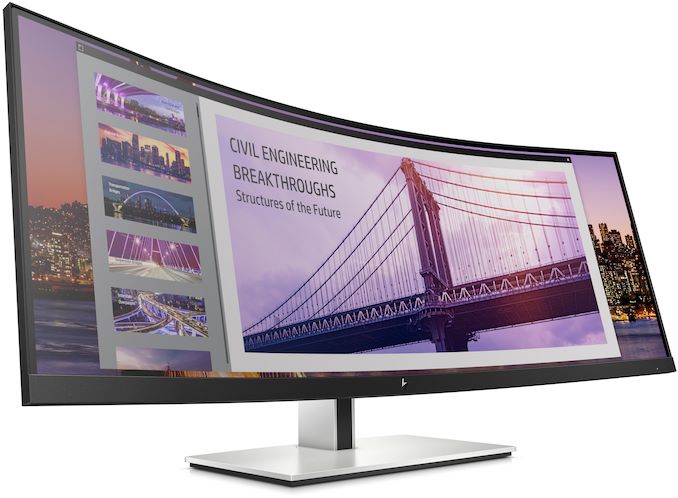
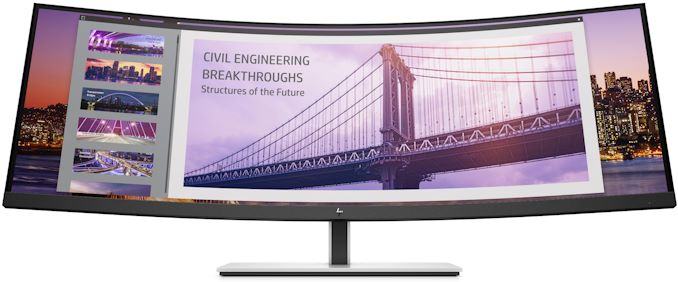
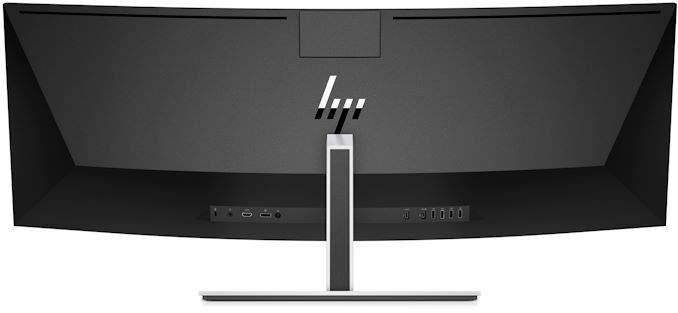
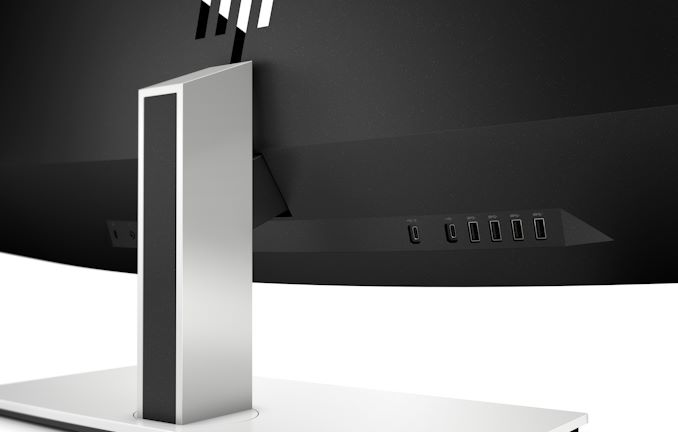

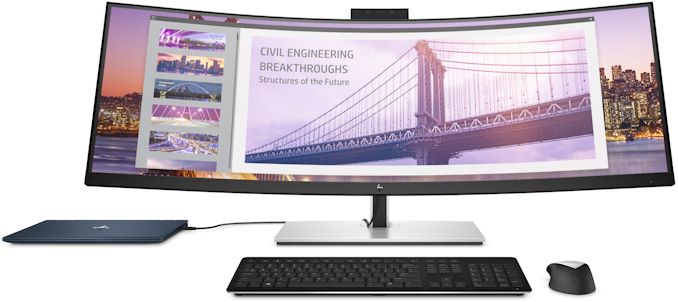

 Quote
Quote
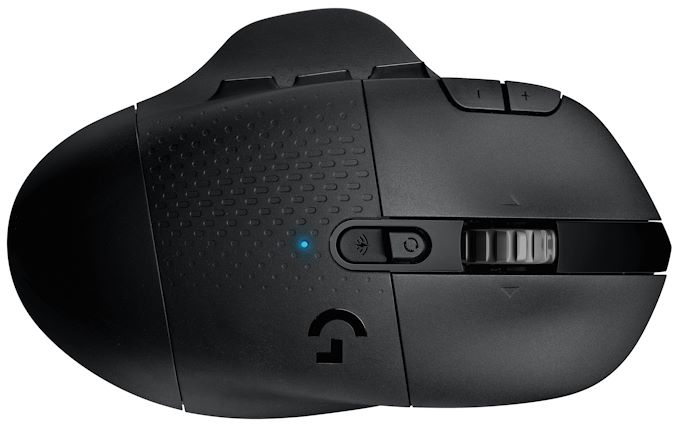
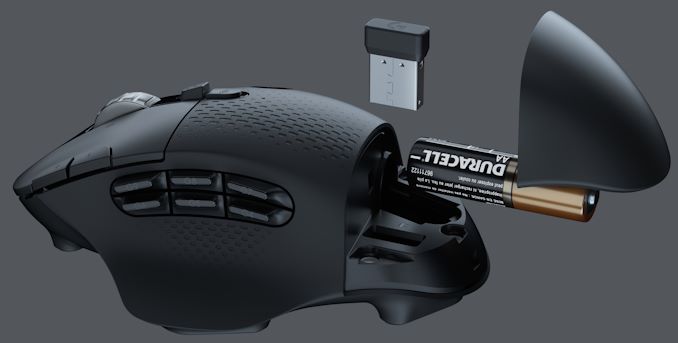
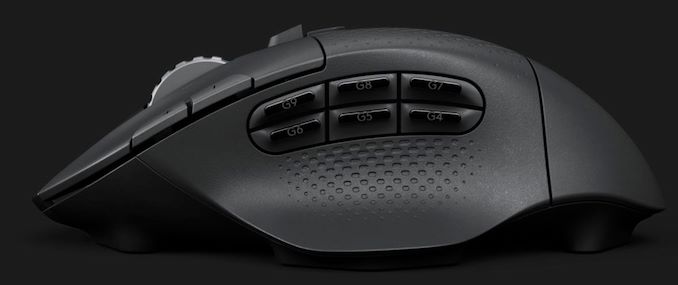
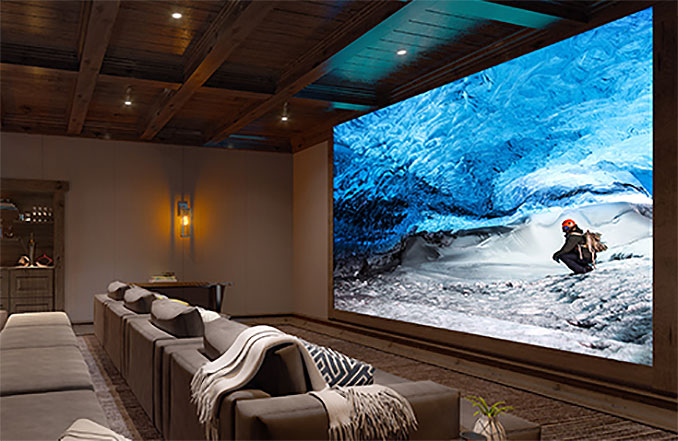
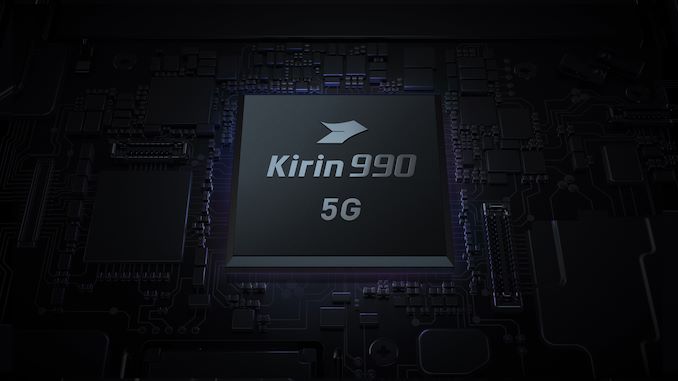




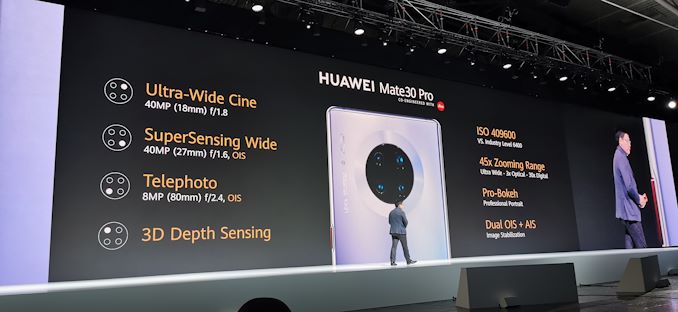

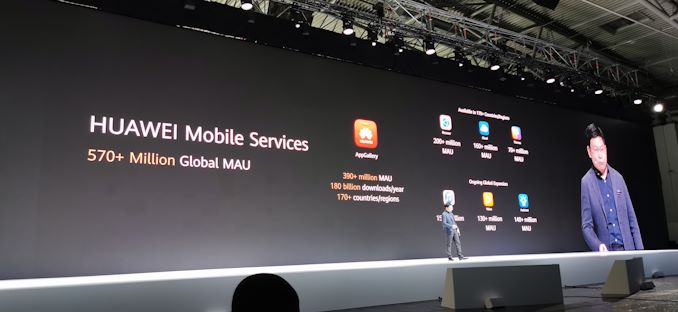
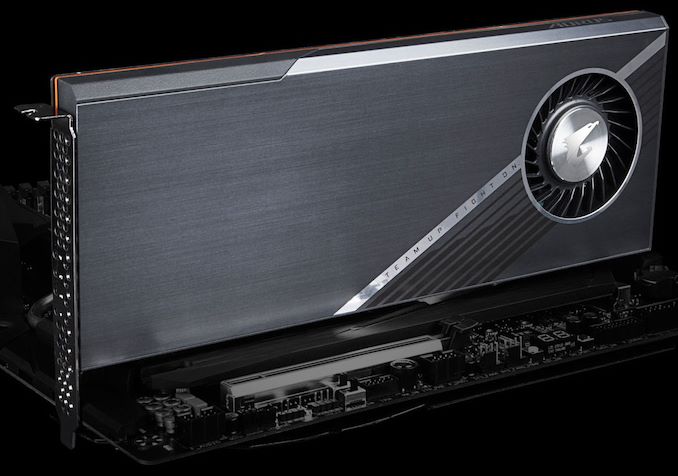
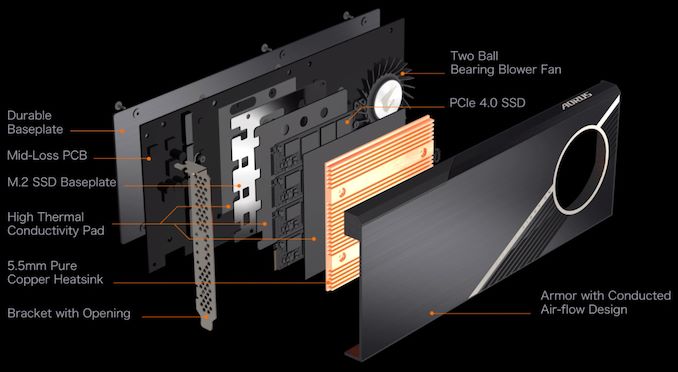

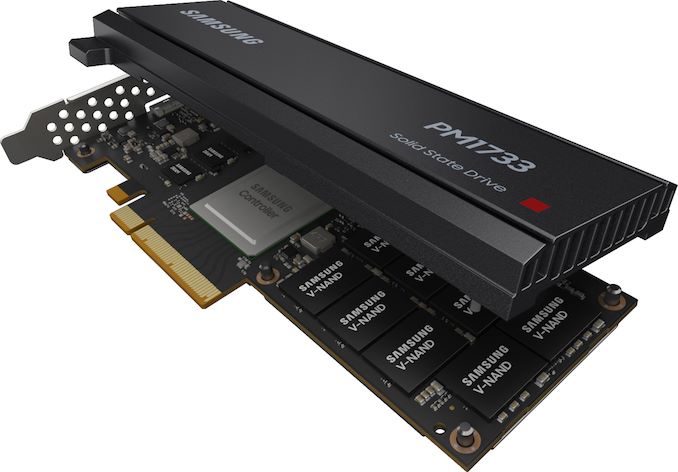
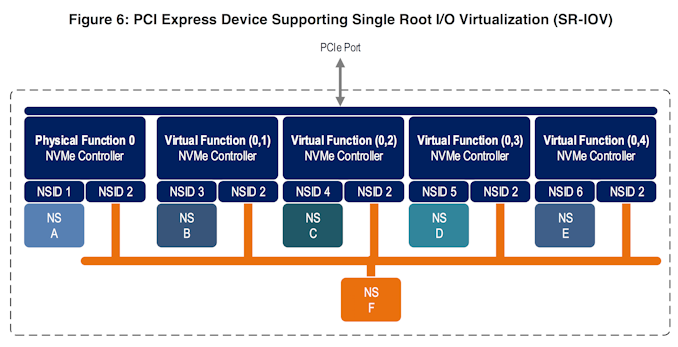
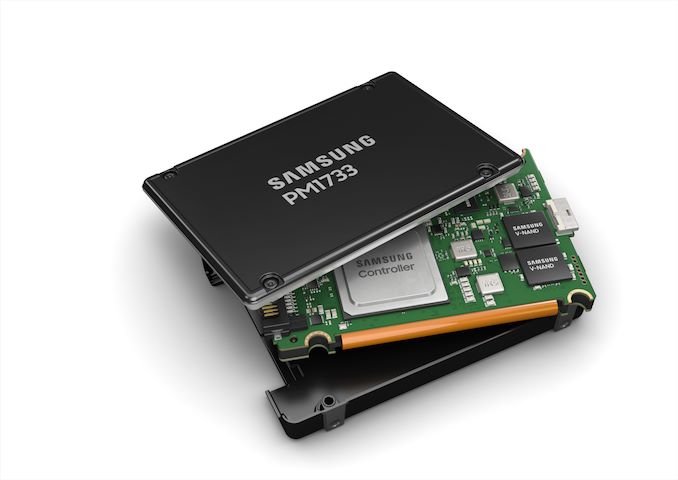

[1]_575px.jpg)
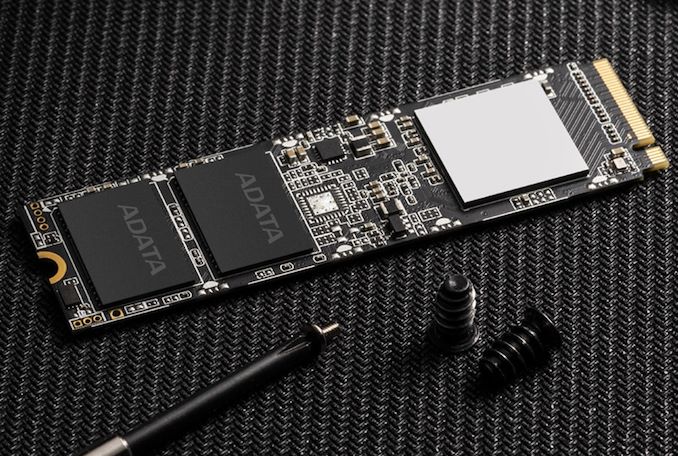
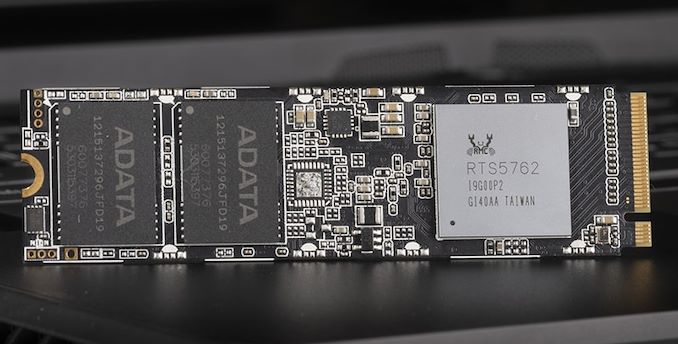
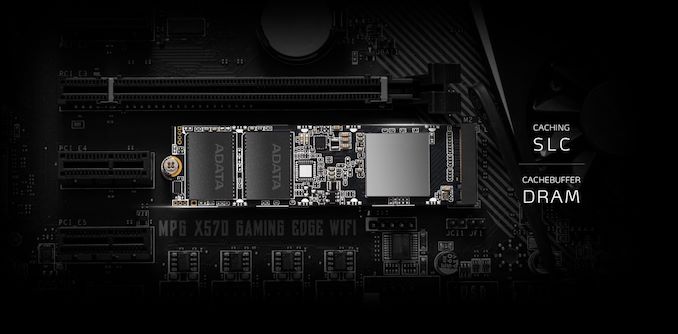
















Bookmarks